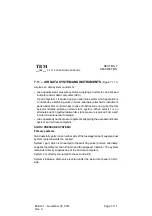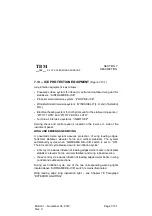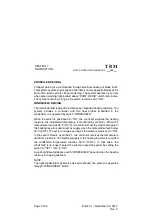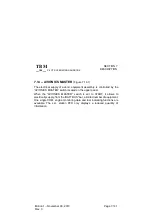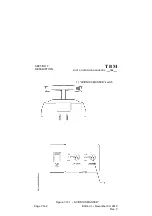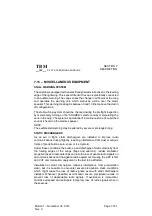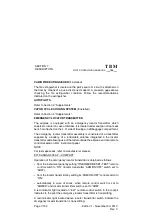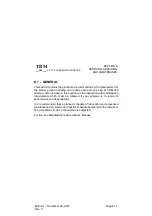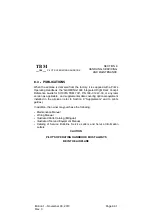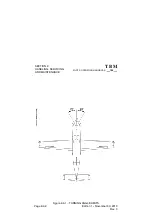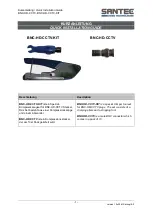
SECTION 7
DESCRIPTION
TBM
700
PILOT’S OPERATING HANDBOOK
Page 7.15.1
Edition 1 -- November 30, 2010
Rev. 0
7.15 -- MISCELLANEOUS EQUIPMENT
STALL WARNING SYSTEM
The airplane is equipped with an electrically deiced stall sensor in the leading
edge of the right wing. This sensor fitted with a vane is electrically connected
to an audible warning. The vane senses the change in airflow over the wing
and operates the warning unit, which produces a tone over the alarm
speaker. This warning tone begins between 5 and 10 knots above the stall in
all configurations.
The stall warning system should be checked during the preflight inspection
by momentarily turning on the ”SOURCE” selector and by manipulating the
vane in the wing. The system is operational if a continuous tone (low--pitched
sound) is heard on the alarms speaker.
NOTE :
The audible stall warning may be altered by severe or prolonged icing.
STATIC DISCHARGERS
As an aid in flight, static dischargers are installed to improve radio
communications during flight by reducing interference from dust or various
forms of precipitations (rain, snow or ice crystals).
Under these conditions, the build--up and discharge of static electricity from
the trailing edges of the wings (flaps and ailerons), rudder, stabilator,
propeller tips and radio antennas can result in loss of usable radio signals on
all communications and navigation radio equipment. Usually, the ADF is first
and VHF communication equipment is the last to be affected.
Installation of static dischargers reduces interference from precipitation
static, but it is possible to encounter severe precipitation static conditions
which might cause the loss of radio signals, even with static dischargers
installed. Whenever possible, avoid known severe precipitation areas to
prevent loss of dependable radio signals. If avoidance is impractical,
minimize airspeed and anticipate temporary loss of radio signals while in
these areas.

